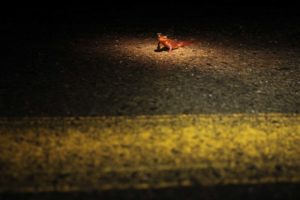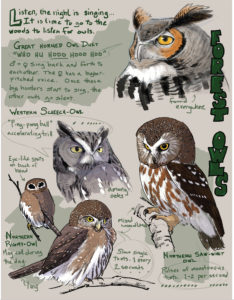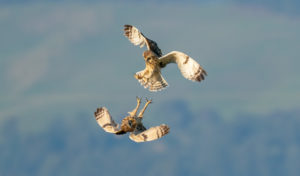Q: Driving on Interstate 5 last fall, I saw at least 10 dead barn owls, apparently killed when they were blinded by headlights. Is this amount of roadkill alarming? [Rich, Albany]
A: It seems counterintuitive, but I would be more worried about barn owls if you saw no roadkill. The dead birds indicate owl abundance. Owls do hunt along roads, but mostly they cruise over fields, and sometimes over highways. With their extraordinary hearing, they fly low, listening for rodents. For millions of years this was beneficial, but the owls are not so well adapted to I-5!
Barn owls are the most widespread not only of all owls, but maybe of all birds. They have managed to get to most of the planet, even remote islands like the Galapagos, Madagascar, and Borneo (and Hawaii, where they were introduced by people). The owls’ success is tied very closely to that of their rodent prey. Like most birds of prey, owls begin incubating eggs as soon as they’re laid, so chicks hatch over a period of days. In times of abundance, there’s enough food for all young, and the owls often have two broods. But when food is short, older chicks may outcompete smaller siblings.
Owl lore also abounds–including, in our culture, that owls are wise. Perhaps it’s their large heads and eyes (like a certain primate we think wise). And I think barn owls may be the original ghosts. Church belfries are perfect nesting spots, often located next to cemeteries. If you have the good fortune to see barn owls flying low and silently across a cemetery, with white underwing, it’s easy to imagine mistaking them for ghosts.
By the way, it’s illegal to possess any birds, even roadkill, without a permit.
Email your questions to atn@baynature.org.

.jpg)



